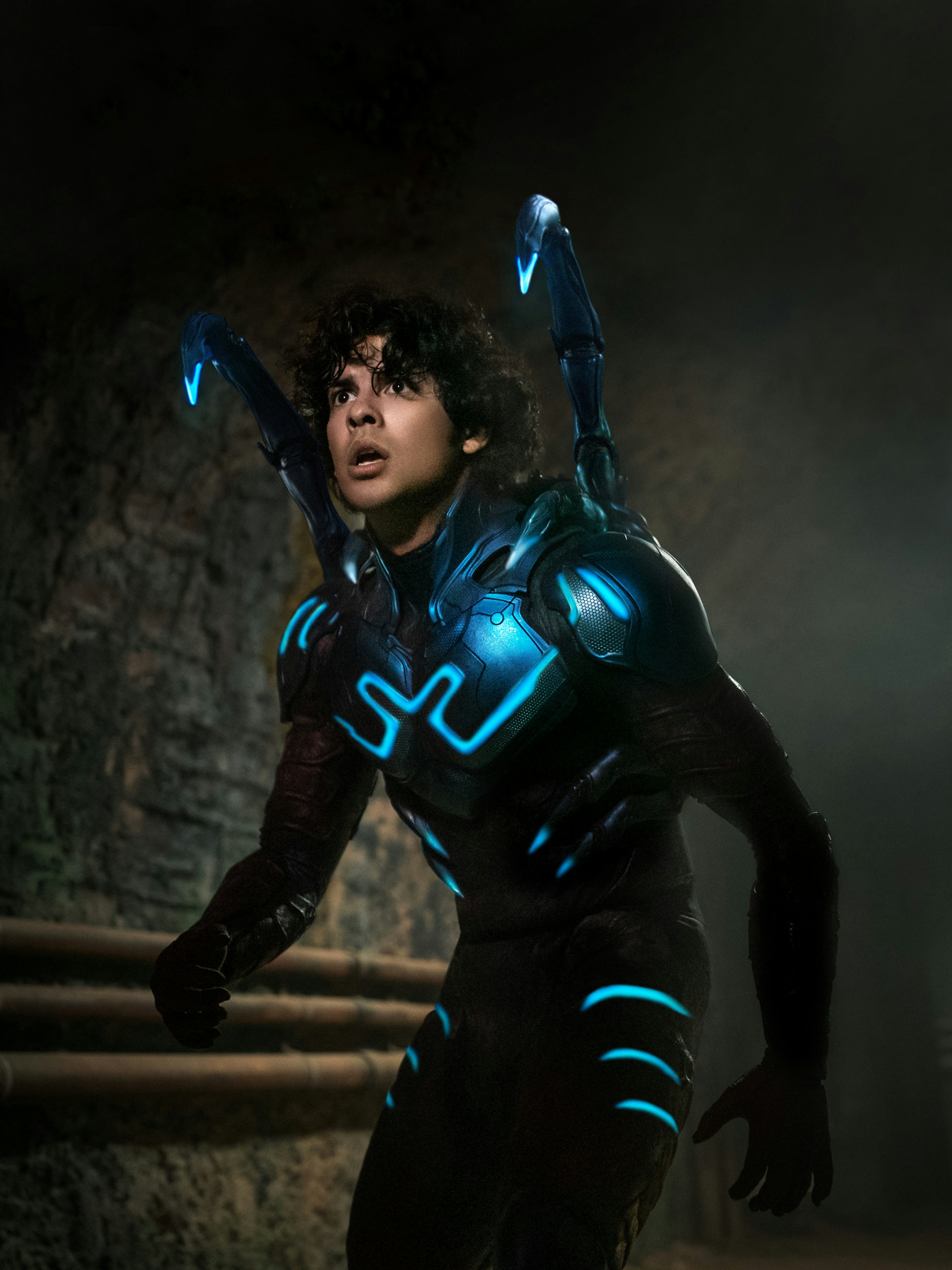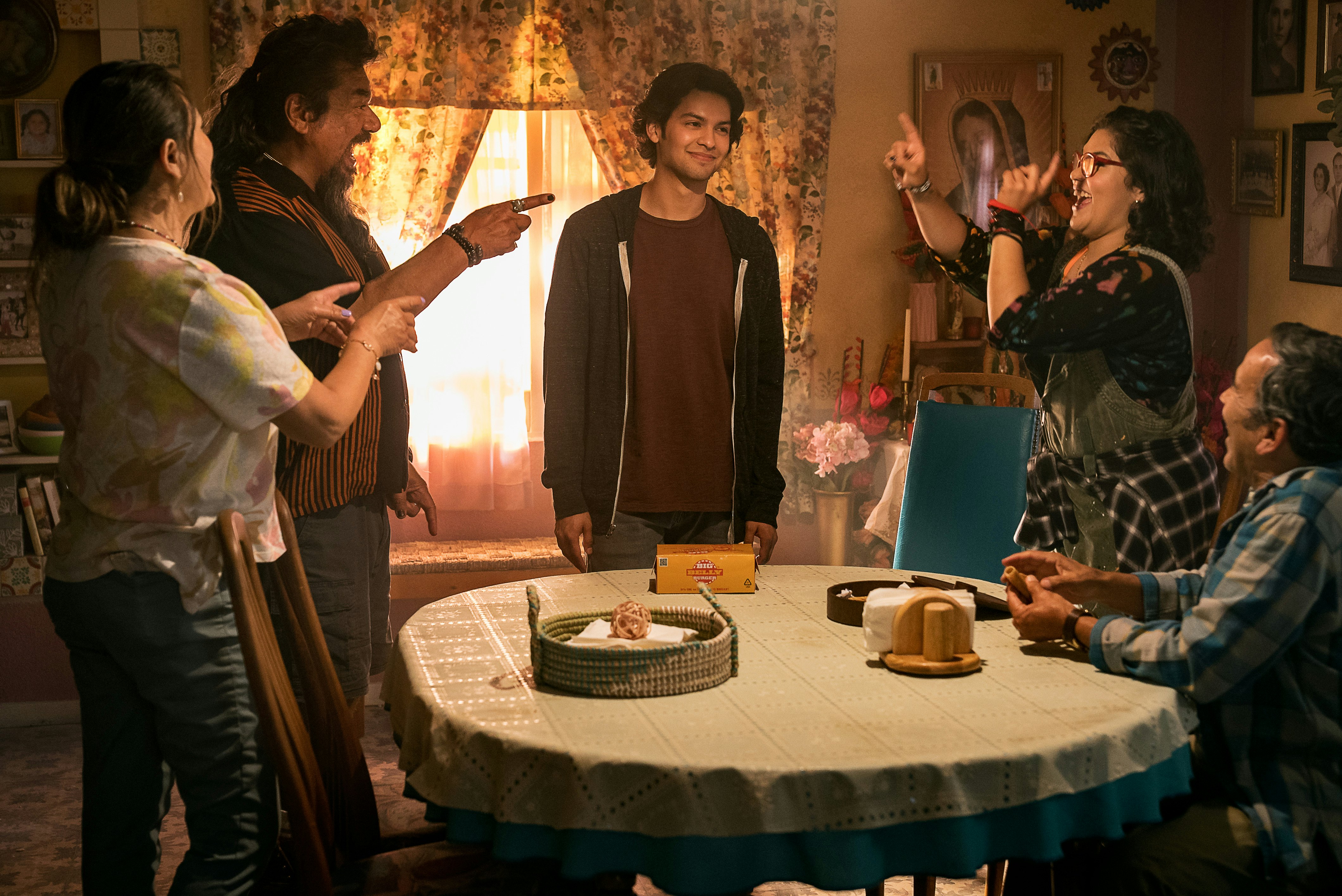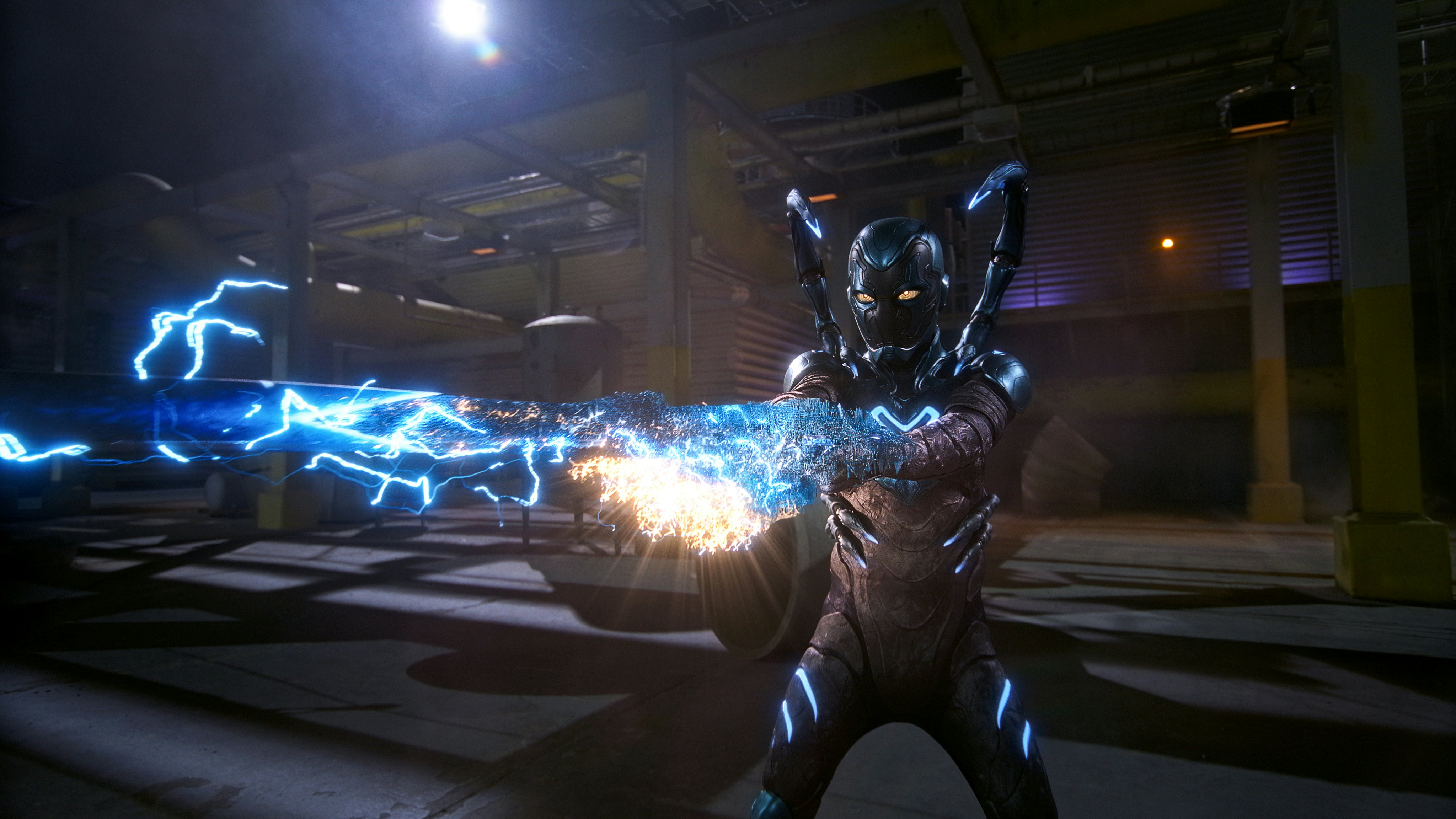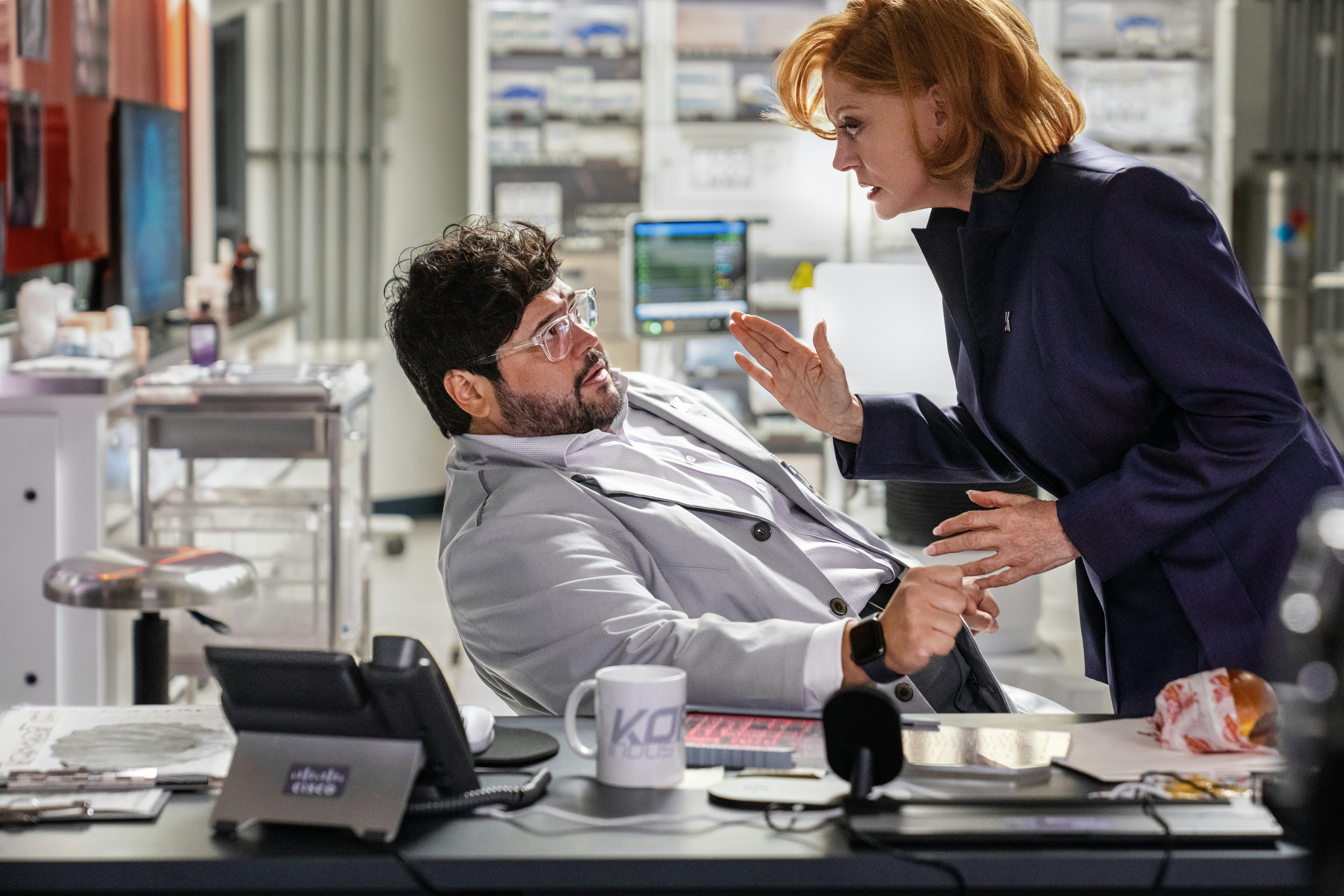
DC is at a crossroads. While The Flash put an end to the DC Extended Universe that kicked off a decade earlier with Man of Steel, James Gunn’s revamped DC Universe won’t officially begin until Superman: Legacy flies into theater in July 2025 (Hollywood strikes allowing). But before any of that can happen, DC still has a few loose threads to tie up. There’s an Aquaman sequel scheduled for December, but before then, a brand new hero will join this discombobulated cinematic universe. Enter: The Blue Beetle.
From rising indie director Ángel Manuel Soto, Blue Beetle is that rare thing in the world of interconnected superhero franchises: a well-built standalone movie. With deep roots in Latin American culture and a tone that blends Paul Verhoeven’s Robocop with Marvel’s quip-based comedy (before it wore out its welcome), DC’s latest movie succeeds entirely on its own terms. No cameos or MacGuffins in sight, just vibes.
Blue Beetle stars Xolo Maridueña (Cobra Kai) as Jaime Reyes, a freshly minted college graduate who returns home only to find his family in crisis. His dad just had a heart attack, they lost the family business, and they’re about to lose their house too at the hands of the evil Kord Industries. But the Reyes family’s fate changes dramatically after Jaime comes into contact with a sentient alien device called the Scarab. The device bonds with him on a molecular level, giving our hero superpowers (flight, strength, and a cache of futuristic weapons) and transforming him into the Blue Beetle. From there, Jaime has to learn how to work alongside the alien AI sharing his body while learning the secret origins of his powers and taking down Kord Industries before they harness the Scarab to create an unstoppable, super-powered army.
A superhero movie is only as good as its star, and Xolo Maridueña is more than up for the task. Anyone who’s watched Cobra Kai already knows the 22-year-old has talent to spare, but Blue Beetle confirms he can do much more than punch and kick. He’s as convincing in the movie’s explosive fight scenes as he is in its darker moments (for PG-13, Blue Beetle gets surprisingly mature at times).
The rest of the cast, mostly made up of the tight-knit Reyes family, all pull their weight as well — from Jaime’s sarcastic sister to his beloved grandmother. But the unsurprising standout is George Lopez as Uncle Rudy, a burnout inventor in the mold of Doc Brown, who delivers some of the funniest lines while also leveling up the action with his own hacked-together gadgets.

But the real star of Blue Beetle is its setting: the fictional city of Palmera, Texas, a new location invented for the movie. Palmera City is a glittering, futuristic metropolis full of skyscrapers and holograms, which cast a shadow over the poorer neighborhood where the Reyes live and where corporate military squads patrol the streets. Ruling over everything is Kord Industries and its evil CEO Victoria Kord (Susan Sarandon with the perfect mix of malice and charm).
Palmera is the type of polished dystopia that director Paul Verhoeven brought to life in movies like Robocop and Total Recall, although with the edges sanded off for a family-friendly audience. But even with its PG-13 rating, Verhoevian themes of anticapitalism and social satire shine through. Most of it will likely fly right over the heads of any children in the audience, but there’s enough here to keep adults interested — and maybe spark an interesting conversation of two afterward.

For all its positives, Blue Beetle can’t quite escape the faults of the superhero genre. To drive the Verhoeven comparison into the ground, this movie’s reliance on CGI holds it back from the practical effects that make a movie like Robocop feel timeless even today. Most of the CGI here is fine, but when Blue Beetle introduces some bigger set pieces in its final act, the limits of the technology begin to show.
There’s also the issue of its main villain. While Sarandon gives a flawless performance, Blue Beetle also needs a big bad for Maridueña to fight. While the movie manages to infuse that villain (Raoul Trujillo as Conrad Carapax) with plenty of character and pathos, in the end, he’s still just a reflection of our hero with similar powers, leading to a predictable final showdown.

Blue Beetle has been described as “the first full DCU movie,” but what does that actually mean? Filmed long before James Gunn took the helm of the franchise, nothing in this movie seems to represent his vision for a cinematic universe. But if there’s room in the DCU for more voices besides just Gunn’s, then Ángel Manuel Soto’s take on the Blue Beetle deserves a spot next to future iterations of Batman and Superman in the inevitable next Justice League movie.
And maybe, if we’re lucky, Gunn will borrow and trick or two from Soto along the way.







